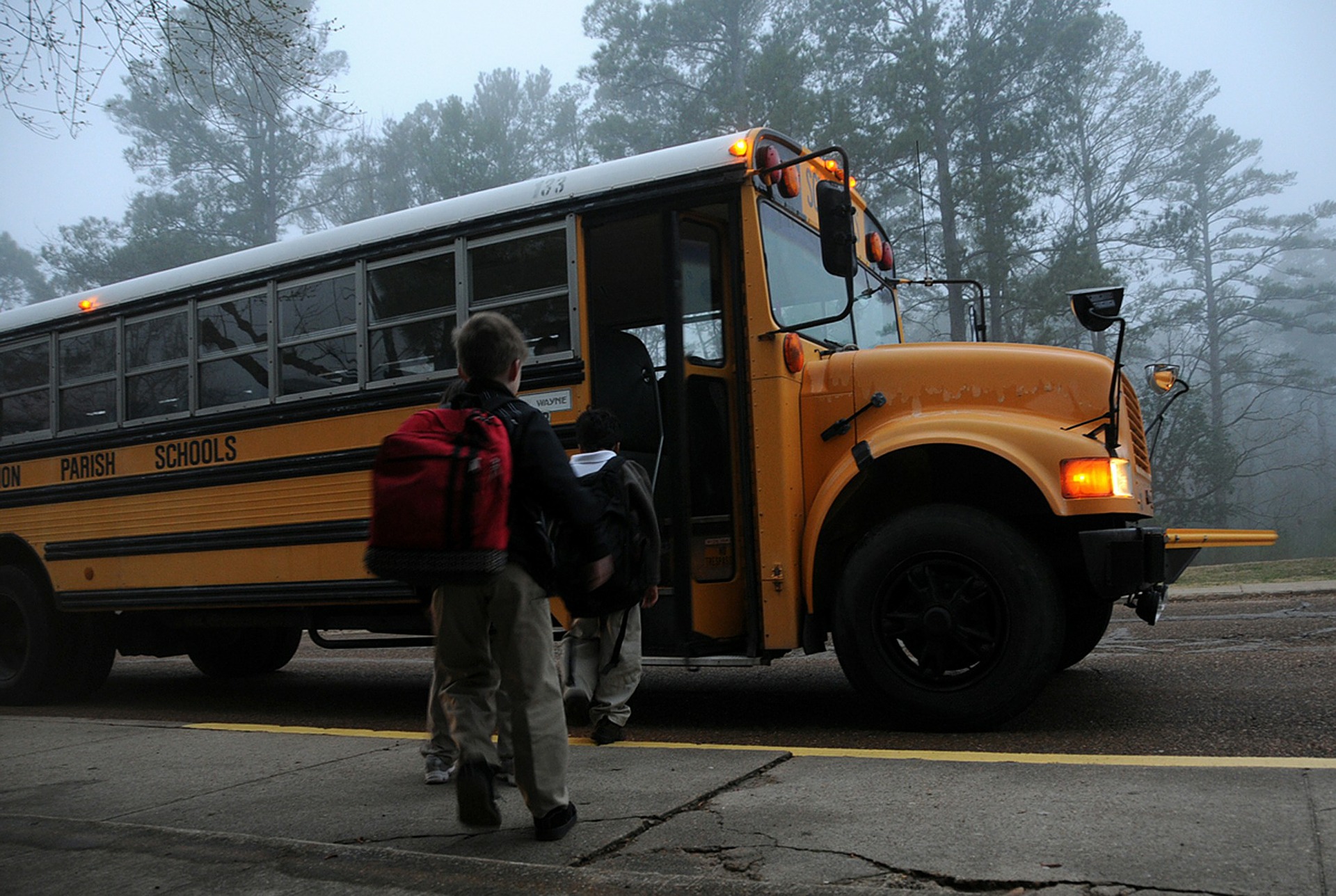Get Ready to Thrive is a part of Amazon Services LLC Associates Program, as well as other affiliate and/or referral programs. If you purchase or opt-in after clicking on these links, at no additional cost to you, we may receive a small commission for making you aware of these important resources.
Once controversial, homeschooling is becoming one of the biggest alternatives to public schools in America. Almost everyone knows a coworker, a family member, or a neighbor who homeschools or was homeschooled themselves, or someone who is considering it for their own children in the future. Plus, major attractions like water parks and museums even offer dedicated homeschool days!
Of course, it’s one thing to know about homeschooling, but it’s another to actually do it. New homeschool families face a shelfful of challenges.

But first, what is homeschooling (home education)?
Before we continue, let’s define our terms.
What does homeschooling mean?
For the purpose of this article, homeschooling (commonly known as home education, as this article will describe) is what occurs when a parent or guardian decides to educate their child at home, with the parent/guardian acting as the primary teacher.
What does homeschooling NOT mean?
It doesn’t mean you never leave the house, interact with other people, or utilize outside educational resources. In fact, many homeschoolers are heavily involved in their local churches and communities. Many homeschool families also run small, home-based businesses where children interact with customers and learn important life skills. (One such example is Seeds for Generations.)
What’s the difference between “home education” and “homeschooling”?
While these terms are often used interchangeably, home education especially emphasizes the encompassing educational aspect of homeschooling. Instead of just being confined to school subjects like math, science, or language arts, home education also seeks to teach life and character topics. This results in a well-rounded education.

Why homeschool?
There are many reasons why parents homeschool their children, but here are some common reasons.
For some parents, it’s an academic choice.
Over the last several years, we’ve seen many changes to the public-school systems in America. Most recently, we’ve seen the advance of the No-Child-Left-Behind and Common Core Standards. These changes paired with other problematic aspects of both public and private schools (drugs, pornography, and violence, in addition to indoctrination of students in worldviews that parents disagree with, just to name a few) convince many parents that their children can receive a better, more rigorous education at home.
Even more recently, with many unknowns surrounding the school year thanks to COVID-19 regulations, homeschooling also offers a more stable educational environment for families. Parents don’t have to worry about their children’s schedules changing suddenly (even from day to day, such as has been discussed by some districts). Plus, when you’re homeschooling, families avoid dealing with school mask mandates, social distancing guidelines, etc. that just aren’t practical in a classroom setting.
For other parents, the choice is much more than just academics.
Christian parents in particular know they can provide a Christ-centered education to their children with homeschooling. With home education, they can teach their kids not only math facts and parts of speech, but also ground all instruction in God’s Word and help develop character traits like hard work, respect, and honesty.

Enter: Challenges
Of course, homeschooling differs from public or even private school experiences. When parents start homeschooling, they have a LOT of questions.
- What subjects should I focus on first?
- Which teaching method should I use?
- What curriculum should I pick?
- How do I teach multiple ages?
- How is high school different from elementary school?
- And on, and on, and on.
Every homeschool parent comes from a different background. Every parent has various ideas and misconceptions about education and homeschooling. That’s why answering specific questions is very difficult.
Listen to Sharon Peterson address such a question:
“How to homeschool!? That is a question that could take a lifetime to explore. In fact, it may take you a lifetime of learning with your own children to figure out just exactly how it is done. And then you’ll find out more. The learning goes on as your life changes and your children grow.
Homeschooling is a journey.. You learning right along with your children Your homeschooling practices, methods and habits will change with your family. As your family and children grow and mature your needs and personalities will require different approaches to learning.”
Like Sharon suggests, we can’t answer every practical question about your homeschool and how it will work. However, there are some universal principles that apply to almost every situation.
Here are 5 homeschooling tips from REAL homeschooling parents. We hope they’re helpful to you.

Tip #1: Incorporate hands-on activities into school life
If you homeschool, you’re no longer restrained to a classroom! Instead, you can study AND see subjects in action.
For example, Scott Terry’s family includes nature study in their homeschooling curriculum. Listen to Scott describe the importance of hands-on experience:
“Since we are what I like to call ‘Charlotte Mason style agrarian homeschoolers’, people often ask how we do the nature study portion of our educating. I enjoy talking about this, because to me, nature study is one of the most important and rewarding things we can do with our children. Nature study, for us, is more of an everyday, all the time pursuit and less of a ‘subject’ or part of a school day. We live and breath ‘nature study’.
The first and most important thing that everyone needs to remember is that for children to understand the natural world and God’s creation they must spend time outdoors. Although good literature, accurate field guides, and the like are important; nothing can replace spending time in the outdoors observing the wonders of creation. Seeing it…feeling it…smelling it….tasting it, these are what matter most.” (“Nature Study… Agrarian Style” at North Country Farmer)

Tip 2: Collaborate with other homeschoolers
Who says homeschoolers aren’t social? There are SO MANY homeschooling organizations available now, including homeschool co-ops, field trip groups, enrichment classes, and even group online learning opportunities. Collaborating with other families has many advantages, especially when it comes to finding curriculum and learning new things.
For example, purchasing new curriculum quickly becomes expensive. Many homeschool groups, however, provide informal opportunities for buying or lending materials. For example, Heather Harris talks about creating a homeschool lending library, where families can share curriculum.
“Having 7-10 families with similar goals and mindset is helpful, but not required. Maybe just starting out you have 2-3 families that are willing to share some of their materials. Each family just needs to be willing to loan out something for others to use. It can be a math book that your child has outgrown, or read alouds that you are finished with. Perhaps a unit study that you thought would work for you, but your child needs another year before they will get the most from it.” (“Homeschool Curriculum Lending Library” at The Homesteading Hippy)

Tip 3: Work towards independence, regardless of your children’s ages
A HUGE part of education is training your child to become an educated adult that will thrive in everyday life. That means working towards independence as each child matures, so they can learn how to be self-directed, life-long learners.
Listen to what Sarah has to say about this important topic.
“This goes for both big guys and little guys. When book work has to be done, you need your older kids to be able to do their work without hand holding. Encourage them to do their best, ask questions if they need help and come look it over with you when they are done. This is an important life skill to learn, so staying focused on the task at hand, even if mom isn’t right there next to you is a goal all families should work toward.
Sometimes you will need to sit and explain a topic or give instructions before they work on their own. This is when it will greatly benefit you to get your young ones working independently as well. They should be able to play quietly in the room without interrupting for 5-10 minutes or longer depending on their age. Even babies should be able to entertain themselves for short periods.” (“Big and Little: How to Homeschool with Little Ones in the House” at The Free Range Life)

Tip 4: Don’t be afraid to be flexible
Have you ever asked a veteran homeschool mother what lessons she learned first? This probably makes every list! As a homeschool parent, you shouldn’t be afraid to be flexible, especially if you have young kids. Adjust your homeschool schedule according to your lifestyle.
Once again, Sarah provides wisdom about this.
“When you have young children you have to learn to be flexible. Don’t be a slave to your schedule. If it is not working, change it. Just because public school starts bright and early in the morning doesn’t mean you have to. Do your history reading during lunch time. Have math lessons during nap time. Take turns reading books aloud at bedtime- you read one, he reads one- to get that reading practice in. Find what works for your family and do that instead.” (“Big and Little: How to Homeschool with Little Ones in the House” at The Free Range Life)

Tip 5: Pick a method that works for your family, even if it’s not a popular curriculum choice
There are so many different homeschooling resources available that it’s overwhelming. Some homeschool parents just pick curriculum from close friends or homeschool experts, instead of researching and choosing something that would work best for their own family.
For example, Mary Woita’s family recently made the decision to put away the TV (not a popular choice in today’s culture!), since it was hindering their learning goals. Listen to her account:
“How were they to learn any basic skills if I wasn’t including them in my work? The other problem that I was facing was that my toddlers were becoming obsessed with it.
We don’t have a cable service hooked up as it is, but they still had their (age appropriate and mom approved) DVDs. It was becoming a serious problem when they would come downstairs in the morning and the first thing they would do, was turn the TV on. Not anymore. It’s ‘gone’ as my 3-year-old says.
We have been working towards this for a little while but are now fully transitioning to Montessori learning on our homestead.” (“Raising Farm Kids: Pre-Homeschool Lessons” at Boots & Hooves Homestead)
Finally, don’t be afraid to mix and match what works. Don’t chain yourself to just one method. Listen to Teri talk about what system they’ve chosen for their homeschool, and why they don’t really fit into that system, either!
“While I am still very inspired by the Waldorf educational philosophy, I have come to terms with the fact that I’m not a purist. What really resonates with me is the artistic, holistic, seasonal, and community aspects of Waldorf education, as well as the fact that technology is completely de-emphasized for so much of childhood. But I really have struggled with not fitting into the “perfect mold” of a Waldorf homeschooling family. To be honest – we have NO daily rhythm. We have weekly commitments and seasonal flow, but for the most part, each day is invented as we go.” (“Waldorf Homeschooling on Our Homestead” at Homestead Honey)

BONUS! Tip 6: Don’t be afraid to try something new and unique
Never underestimate the power of learning opportunities around you, even those you might not already have planned into your curriculum. For one homeschool parent named Janelle, that meant publishing her son’s article on their blog.
“As a homesteading, homeschooling family, we try to include our kids in what’s going on around the farm. Our son has been watching all this blog stuff with great interest. He finally asked us if he could write his own article. So, here is the kid version of raising chickens. It is really quite interesting to see what things are perceived as the highlights (by this kiddo anyway).” (“Raising Chickens: A Kid’s Perspective” by Homestead in the Holler)

Conclusion
Nobody’s homeschool will match another’s. Every student, every parent, and every situation demands unique things. But again, that’s the beauty of homeschooling. It allows you to focus on education in a way that works best for your child, so you can give him the best education possible.
You may face homeschooling challenges and sometimes wonder if you made the right choice, but homeschooling is worth it all.




We don’t homeschool, but I know plenty of families that have and do. Great tips here! I’ll pass the article along! 🙂